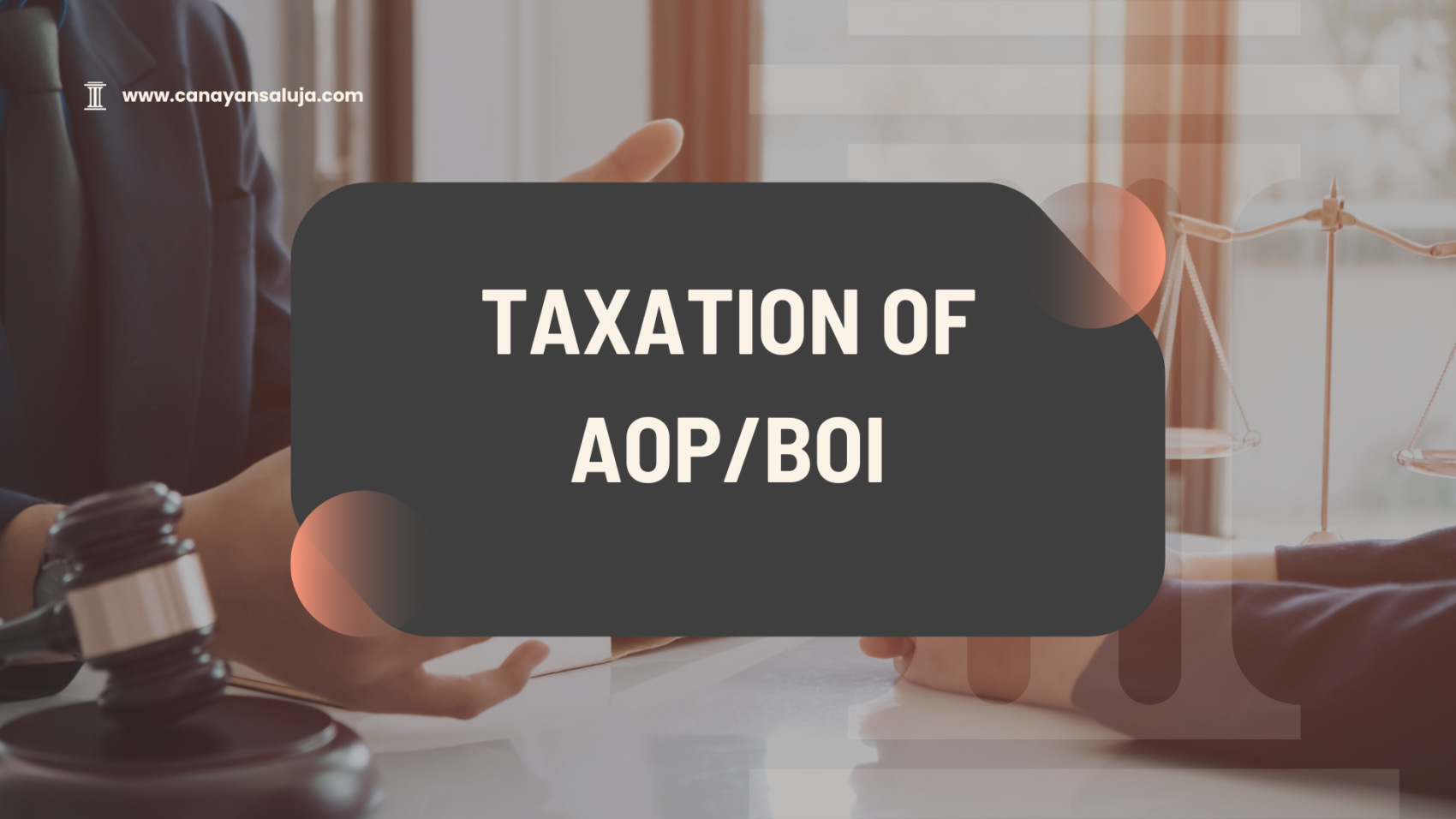TAXATION OF GIFTS
The Indian Government introduced the tax on gifts in April 1958, and the Gift Tax Act regulates it. The said Act was introduced to impose taxation on the exchange of gifts under requisite circumstances.
Essentially, gifts here represent anything in the form of cash, bank cheques, demand drafts, and other valuables. According to 2017’s amended law, any gift received by an individual or individuals is now taxed at the hands of receiver as ‘Income from other sources. Notably such gifts are taxed at regular rates (Slab Rates).
Taxation of Gift in India is as Follows: –
|
S.NO |
EXPLANATION |
|
1. |
Any gift received by employee from employer due to employee – employer relationship it is always taxable (even if received on marriage) under income from salary. |
|
2. |
Any gift/ benefit/ perquisite/ arising from Business or Profession is always taxable under the head PGBP. |
Other Gifts u/s 56(2)(x)
Any gift received or asset acquired for low consideration by any person: –
|
S.NO |
EXPLANATION |
|
1.
|
Money (without consideration): If the aggregate amount received by any person during the P.Y exceeds Rs. 50,000 then the whole amount of gift is taxable. . Example: Mr. Karan receives cash gift of Rs. 20,000 each from his 3 friends on the occasion of his Birthday, is the money received taxable? . Since the total amount of cash gift received exceeds Rs. 50,000 (20,000*3 = 60,000), the entire amount i.e. Rs. 60,000 is taxable. |
|
1.
|
Moveable Property (without consideration): If any moveable property received by any person without any consideration during the P.Y and the Fair Market Value (FMV) of such property exceeds Rs. 50,000 then the entire Fair Market Value shall be taxable. . Example: Mr. Mohan receives gold chain worth Rs. 80,000 from his girlfriend, is this gift taxable? . Yes, since the moveable property’s Fair Market Value exceeds Rs. 50,000, the entire amount i.e. Rs. 80,000 will be taxable in hands of Mr. Mohan. |
|
1.
|
Moveable Property (Inadequate consideration): If any moveable property received by any person during the P.Y for inadequate consideration and the Fair Market Value (FMV) of such property less consideration paid exceeds Rs. 50,000 then the difference between Fair Market Value & consideration paid shall be taxable. . Example: Mr. Kunal received a painting worth Rs. 1.2 lakhs from his friend for Rs. 30,000 only, is the difference taxable? . Yes, since the FMV less consideration paid is greater than Rs. 50,000, the difference is taxable in hands of Mr. Kunal (Rs. 1,20,000 – Rs. 30,000 = 90,000). |
|
1.
|
Immoveable Property (without consideration): If any immoveable property received by any person without any consideration during the P.Y and the Stamp Duty Value (SDV) of such property exceeds Rs. 50,000 then the entire Stamp Duty Value shall be taxable. . Example: Mr. Nayan receives Land worth Rs. 2,50,000 (SDV) from his girlfriend, is this gift taxable? . Yes, since the immoveable property’s Stamp Duty Value exceeds Rs. 50,000, the entire amount i.e. Rs. 2,50,000 will be taxable in hands of Mr. Nayan. |
|
1.
|
Immoveable Property (Inadequate consideration): If any immoveable property received by any person during the P.Y for inadequate consideration and the Stamp Duty Value (SDV) of such property less consideration paid exceeds Rs. 50,000 plus Stamp Duty Value (SDV) is more than 110% of the consideration then the difference between Stamp Duty Value & consideration paid shall be taxable. . Example: Mr. Kunal received a Bungalow worth Rs. 1.2 crores (SDV) from his friend for Rs. 20 lakhs only, is the difference taxable? . Yes, Since the SDV of the more than 110% of the consideration paid (110% * 20 lakhs < 1.2 crores) & the difference between Stamp Duty Value and consideration paid is more than Rs. 50,000 the entire difference i.e. Rs. 1.2 crores – 20 lakhs = Rs. 1 crore is taxable in hands of Mr. Kunal. |
Any property received as gift or acquired for low consideration other than above, Section 56(2)(x) will not be applicable so it will not be taxable.
NOTE 1: What do you mean by Immoveable Property?
|
S.NO |
IMMOVEABLE PROPERTY MEANS: |
|
1.
|
Shares & Securities. |
|
1.
|
Jewellery. |
|
1.
|
Painting. |
|
1.
|
Archaeological collection. |
|
1.
|
Sculptures. |
|
1.
|
Bullion. |
|
1.
|
Drawing. |
|
1.
|
Virtual Digital Assets (VDA). |
|
1.
|
Any other work of art. |
NOTE 2: What do you mean by Moveable Property?
|
S.NO |
MOVEABLE PROPERTY MEANS: |
|
1.
|
Land. |
|
1.
|
Buildings. |
|
1.
|
Land or building both. |
NOTE 3: If Assessee is not satisfied with the Stamp Duty Value of the Property, then his case may be transferred to Valuation Officer.
NOTE 4: Section 56(2)(x) applicable only if it is in the nature of capital asset of the recipient, it is stock in trade then Section 56(2)(x) will not be applicable.
NOTE 5: If any person receiving any asset as gift or acquires for inadequate consideration & he is already assessed u/s 56(2)(x) on FMV/ SDV the cost of acquisition of such asset shall be FMV/ SDV which was considered under IFOS u/s 56(2)(x). When Cost of acquisition is computed as per Section 49(4), the period of holding of the previous owner shall not be included in the period of holding.
If the gifts are received from certain people or on special occasions as mentioned below, then tax will on gift will not be levied: –
|
S.NO |
EXPLANATION (Money/ Property not taxable if it is received) |
|
1.
|
On the occasion of Marriage. |
|
1.
|
From any Relatives. |
|
1.
|
Under will or by way of Inheritance. |
|
1.
|
In contemplation of Death. |
|
1.
|
From any Hospital or medical institution. |
|
1.
|
From any University or education institute. |
|
1.
|
From or by any Trust registered u/s 12AA/12AB. |
|
1.
|
From any Local Authority u/s 10(20). |
|
1.
|
From an Individual by a trust created solely for the benefit of the relative of the individual. |
|
1.
|
By any Fund, Trust, Hospital, Medical Institute, University, Education Institute referred u/s 10(23C). |
|
1.
|
Certain exempt transfers as per Section 47 Clause (i), (iv), (v), (vi), (via), (viaa), (vib), (vie), (vica), (vicb), (vid), (vii), (viiac), (viiad), (viiae), (viiaf). |
NOTE 6: Definition of Relative as per Income Tax Act?
|
S.NO |
Relative as per Income Tax means (in case of Individual): |
|
1.
|
Spouse of the Individual. |
|
1.
|
Brother or Sister of the Individual. |
|
1.
|
Brother or Sister of the spouse of the Individual. |
|
1.
|
Brother or Sister of either of the parents of the individual. |
|
1.
|
Any lineal ascendant or descendant of the Individual. |
|
1.
|
Any lineal ascendant or descendant of spouse of the Individual. |
|
1.
|
Spouse of the person referred in point 2-6 above. |
In case of HUF any member of the HUF is a relative of HUF.
NOTE 7: CBDT Notification No. 40/2020 – Section 56(2)(x) not applicable in following cases:
|
S.NO |
EXPLANATION |
|
1.
|
Immoveable Property received by resident of unauthorized colony in National Capital Territory of Delhi, where Central Government has regularized transactions of such property for conferring or recognizing right of ownership/ transfer/ mortgage in favour of such resident based on latest Power of Attorney, Sale Agreement, Will, Possession etc. including evidencing payment of consideration. |
|
1.
|
Receipt of unquoted shares of company and its subsidiary and subsidiary of such subsidiary by a shareholder where NCLT on application by Central Government has suspended the Board of Directors and appointed newly directors nominated by the Central Government and the shares so received are pursuant to resolution plan approved by NCLT after providing the PCIT/ CIT an opportunity of being heard. |
|
1.
|
Equity shares of Yes Bank received by an investor as per Yes Bank Ltd. Reconstruction scheme, 2020 |
|
1.
|
Equity shares, of the public sector company, received by a person from the Central Government under strategic disinvestment. |
NOTE 8: Amendment by Finance Act 2022 w.e.f. A.Y 20-21
|
S.NO |
Amendment (Section 56(2)(x) not taxable in following cases, Money received: –) |
|
1.
|
By Individual, from any person, for expenses actually incurred on treatment of Covid-19 related illness of him or any family member. |
|
1.
|
By Family member of deceased person, within 12 months of death (death due to Covid -19 illness): – i.From the employer of the deceased person (without any limit); or
ii.From any other person or persons upto Rs. 10 Lakhs.
|
|
NOTES: i.Family means spouse, children and dependent relative (parent, brother, sister).
ii.Death should be within 6 months from the date of testing covid positive.
|
|











